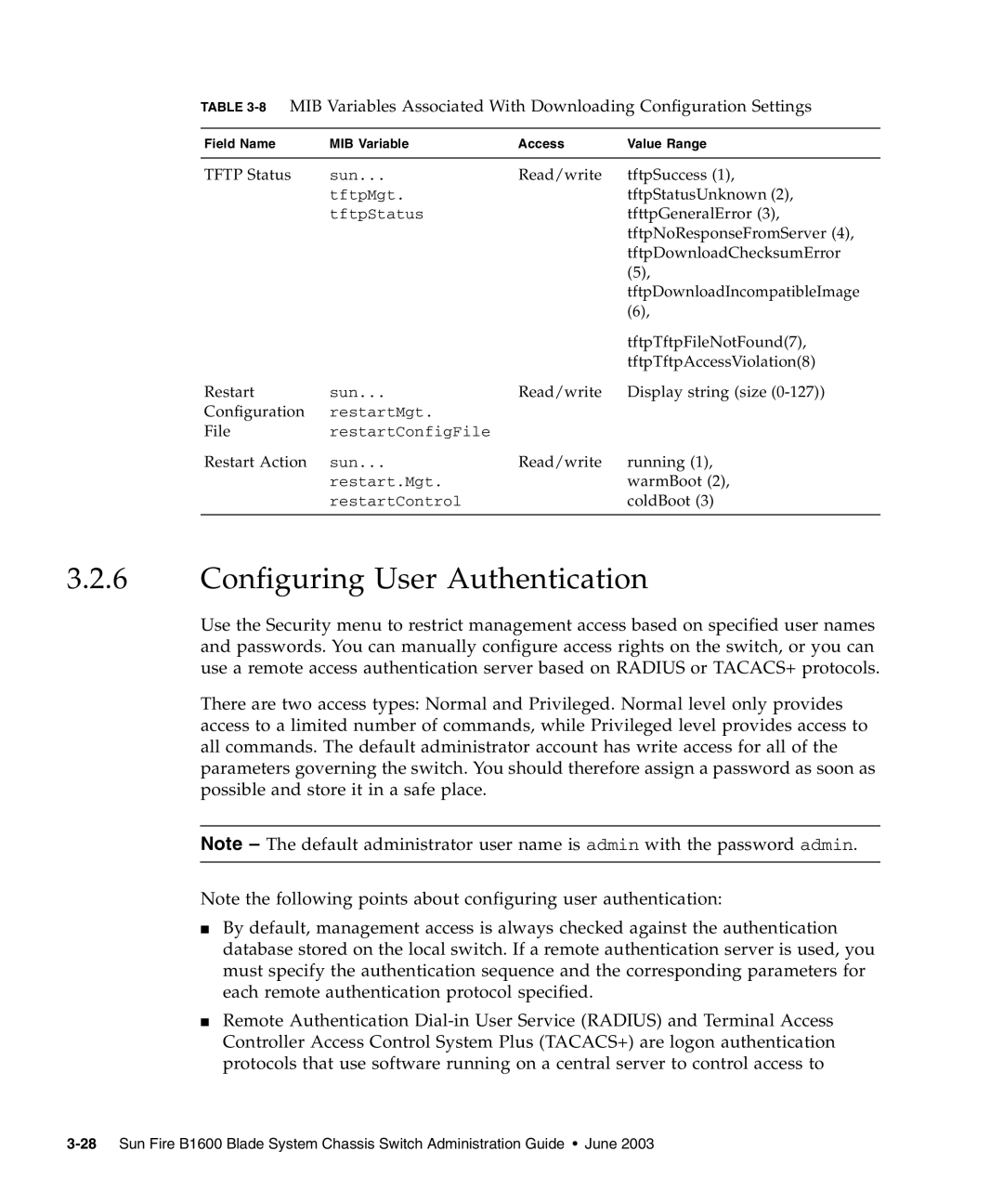
TABLE
Field Name | MIB Variable | Access | Value Range |
|
|
|
|
TFTP Status | sun... | Read/write | tftpSuccess (1), |
| tftpMgt. |
| tftpStatusUnknown (2), |
| tftpStatus |
| tfttpGeneralError (3), |
|
|
| tftpNoResponseFromServer (4), |
|
|
| tftpDownloadChecksumError |
|
|
| (5), |
|
|
| tftpDownloadIncompatibleImage |
|
|
| (6), |
|
|
| tftpTftpFileNotFound(7), |
|
|
| tftpTftpAccessViolation(8) |
Restart | sun... | Read/write | Display string (size |
Configuration | restartMgt. |
|
|
File | restartConfigFile |
|
|
Restart Action | sun... | Read/write | running (1), |
| restart.Mgt. |
| warmBoot (2), |
| restartControl |
| coldBoot (3) |
|
|
|
|
3.2.6Configuring User Authentication
Use the Security menu to restrict management access based on specified user names and passwords. You can manually configure access rights on the switch, or you can use a remote access authentication server based on RADIUS or TACACS+ protocols.
There are two access types: Normal and Privileged. Normal level only provides access to a limited number of commands, while Privileged level provides access to all commands. The default administrator account has write access for all of the parameters governing the switch. You should therefore assign a password as soon as possible and store it in a safe place.
Note – The default administrator user name is admin with the password admin.
Note the following points about configuring user authentication:
■By default, management access is always checked against the authentication database stored on the local switch. If a remote authentication server is used, you must specify the authentication sequence and the corresponding parameters for each remote authentication protocol specified.
■Remote Authentication
